The 20 Best Pore Vacuums, Tested and Reviewed by Beauty Editors
Clogged pores don't stand a chance.
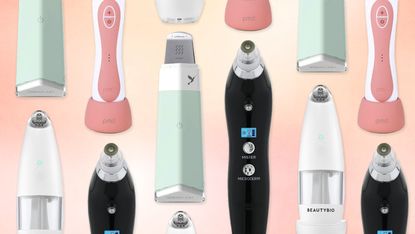

Comedones are wild. All this gunk (read: dead skin cells, oil, leftover makeup) just gathers itself up, decides to clog up your pores, and eventually turns black—or, if pus and inflammation also decide to join the party, turns white. The best blackhead removers and acne spot products can help create a clearer complexion over time, but the best pore vacuums come in handy if you’re looking for either a quick fix or deep clean. “Pore vacuums use a gentle suction force to pull out debris, oil, and dead skin cells clogged in pores,” explains Brendan Camp, MD and board-certified dermatologist. “They can help improve the appearance of skin and minimize the appearance of pore size.”
In short: Pore vacuums work, but should be used with an extreme abundance of caution, especially if you have active acne, extremely dry, or overall sensitive skin. "People with balanced, well-moisturized skin and very mild blackheads can try pore vacuums," says Lori Aliksanian, MD, board-certified dermatologist and founder of MedBeautyLA. "I'd recommend using just one pass to see how your skin tolerates the pressure and try using the lowest setting over the entire area the first few times to monitor how your skin reacts."
Most importantly, you must use a well-vetted pore vacuum tool. Otherwise, you can be left with broken blood vessels, irritation, and redness. To make sure your purchase is up to par, the Marie Claire team tested a handful of pore vacuums—evaluating them on ease of use, safety, and customizability—and tapped a handful of skincare experts for their recommendations. Ahead, the best pore vacuums to win the battle against clogged pores and how to use them correctly.
- The Best Overall Pore Vacuum: PMD Personal Microderm Elite Pro
- The Best Simple Pore Vacuum: FOREO KIWI Blackhead Remover Pore Vacuum
- The Best Ultrasonic Pore Vacuum: Dermaflash Dermapore Ultrasonic Pore Extractor & Serum Infuser
- The Best Pore Vacuum for Sensitive Skin: Vanity Planet Exfora Microdermabrasion Wand
- The Best Pore Vacuum With a Camera: Prabensei Blackhead Remover Pore Vacuum
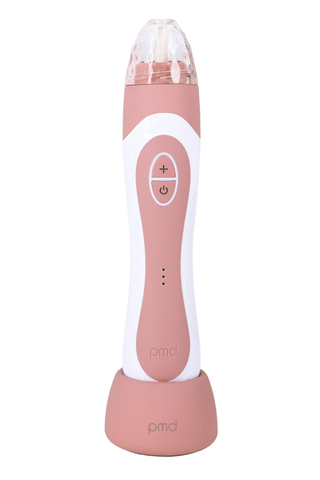
This is as close to an in-office microdermabrasion treatment as you’re going to get. The best personal pore vacuum on the market, the PMD Personal Microderm Elite Pro uses a calibrated vacuum to improve blood circulation (which helps your skin glow) while patented spinning discs exfoliate and clean the pores. I'm a religious direction follower, and have noticed no irritation or tiny face hickeys—just smooth skin that absorbs product like never before.
Number of Attachments: 13
Number of Settings: 3
What We Love: Great design; ease of use; different caps and exfoliation levels to suit different needs; variety of speeds
What We Don't: Expensive
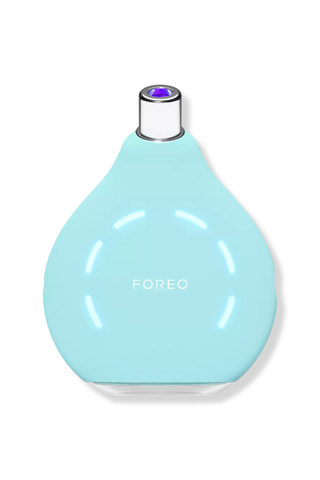
I trust Foreo implicitly when it comes to face devices. Their Foreo Bear sculpted my jawline and their Luna is my go-to facial cleaner. The brand's pore vacuum is also one of my favorites. With no microdermabrasion capabilities (although there is an also-great upgraded version, the Kiwi Derma, if that's what you're interested in), the Kiwi uses vacuum suction to gently extract blackheads, whiteheads, dirt, and any other skin-clogging substances from your sweet pores. It also features six customizable intensities and a blue LED light that helps prevent future breakouts.
Number of Attachments: 1 (does not need to be replaced)
Number of Settings: 6
What We Love: Easy to use; effective; waterproof; tip never needs to be replaced
What We Don't: Like any pore vacuum, you have to use caution to prevent broken capillaries
Review for MC: "I tend to steer away from anything too intense on the skin—I'd rather leave it to the professionals. I was pleasantly surprised by this powerful yet simple device. The smaller head was perfect for getting into my nasolabial folds and despite some initial redness, the area looked clear and clean in no time" — Danielle Cohen, Contributing Beauty Writer
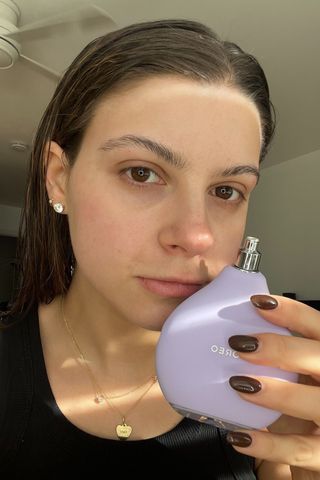
"Before using the FOREO KIWI, the pores around my nose were congested and clogged."
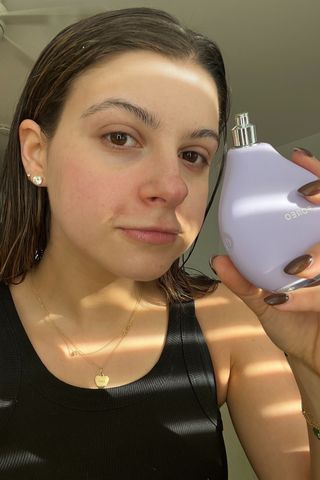
"Despite some immediate redness, my pores were noticeably clearer after just one swipe."
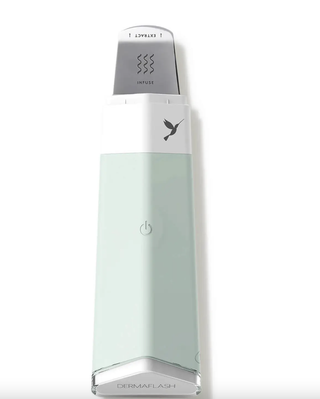
You've heard the praise and read the rave reviews, but does this pore-busting product live up to the hype? The answer is yes, according to Dr. Camp. “This product does not use vacuum suction to clean pores. It uses ultrasonic vibrational technology to gently tease and push debris and oil out of clogged pores,” he says. The swiveled spatula works in two modes: Extract and infuse. The extract mode pushes out gunk from your pores, like excess oil and blackheads, while the infuse mode penetrates products deeper into the skin, like your go-to serum or moisturizer, past the skin barrier. The result is nearly invisible pores.
Numbers of Attachments: 1 (does not need to be replaced)
Number of Settings: 2
What We Love: Dermatologist-recommended; multipurpose; easy to use and clean
What We Don't: Can be too intense if you press too hard
Review for MC: "To me, this is the ultimate beginner-friendly device. All you need is a light touch and a quick read through the instructions, it's fairly fool-proof beyond that. The tool gently swept away blackheads and gunk without irritating the skin." — Danielle Cohen, Contributing Beauty Writer
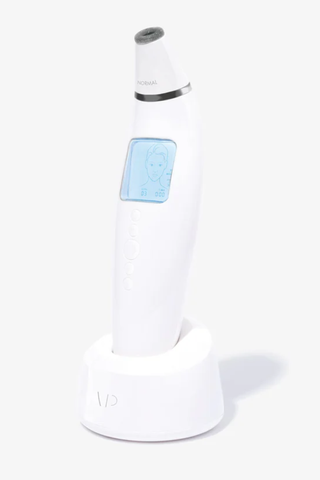
This microdermabrasion wand was designed with gentleness in mind, so it's great for those with sensitive skin—like me. I can use it every single night if I choose, without irritation. The customizable suction shape prevents tugging—especially on the softest setting. In addition to the blackhead-removing properties (the most important, obviously), it provides an uptick in circulation and boosts collagen production, both of which will give a more youthful-looking complexion.
Number of Attachments: 4
Number of Settings: 2
What We Love: Good for sensitive skin; customizable; smart screen
What We Don't: Expensive
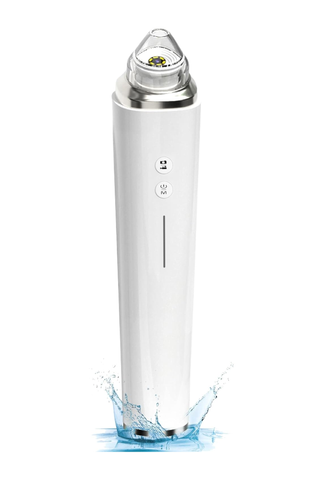
If you're all about pimple popping videos, this one is for you. It comes with a camera (you just sync it up to your phone), so you can see the pore vacuum sucking out your blackheads and whiteheads *really* closely. Seriously, you can enlarge the surface of your skin by up to 20 times. There are three suction heads to choose from and a range of intensities, so you can customize your treatment. That said, this baby is pretty powerful, so it's probably not best for super sensitive skin types.
Number of Attachments: 6
Number of Settings: 3
What We Love: Comes with a camera; customizable
What We Don't: Can bruise sensitive skin
Also Recommended
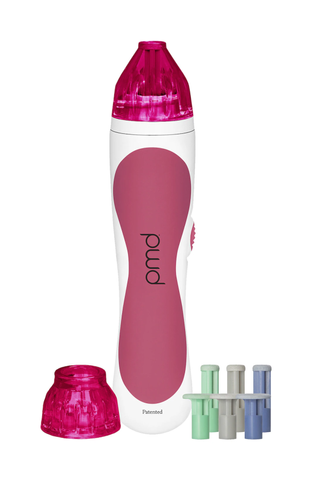
For a more affordable alternative to our number one pick, look no further than another option from PMD: the Personal Microderm Classic. “This product uses spinning disc technology and vacuum suction to both gently exfoliate skin and clean pores,” explains Dr. Camp. In the end, your skin is going to be exfoliated, brighter, and prepped for product absorption. You can choose from three caps, which have varying levels of intensity, to customize how intense your blackhead-sucking treatment will be. That said, there’s only one speed. If you’re looking for a wider variety of options, check out the aforementioned Elite version.
Number of Attachments: 8
Number of Settings: 1
What We Love: Dermatologist-recommended; customizable tips
What We Don't: Only features one speed
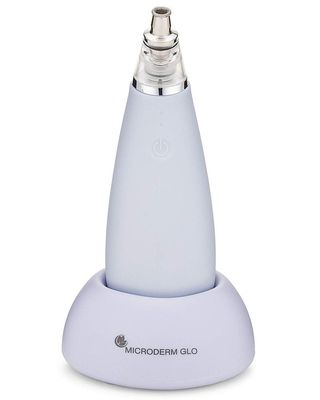
This device is actually the miniature version of the beloved Microderm GLO—an entry-level version without some of its add-ons (and its hefty price tag). With hundreds of five-star reviews, fans gush that this tool can replace costly in-office treatments. It comes with a blackhead suction tip, which can be set to three different speeds. That said, if you want more of a variety of tips, you'll have to purchase them separately.
Number of Attachments: 2
Number of Settings: 3
What We Love: Easy to store; helps get rid of blackheads
What We Don't: Only comes with one tip
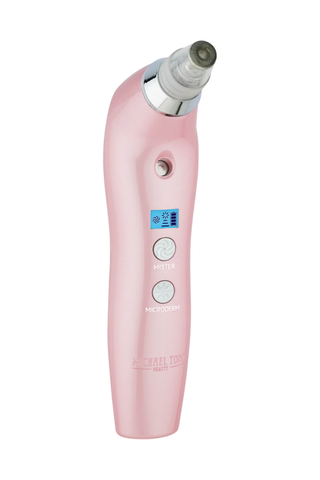
Like many of us, it took former Marie Claire Beauty Director Deena Campbell a second to get into pore vacuums because she was terrified of leaving bruises on her face. "Adding this pore extraction system has been an awesome upgrade to my beauty routine," she shares. "My blackheads are reduced (yes, even the stubborn ones around my nose and chin!) and my skin feels baby soft. I don't use it regularly, but it's perfect when I need a deep clean.”
Number of Attachments: 7
Number of Settings: 3
What We Love: Multi-benefit; can work wet or dry; customizable
What We Don't: The battery doesn't last very long
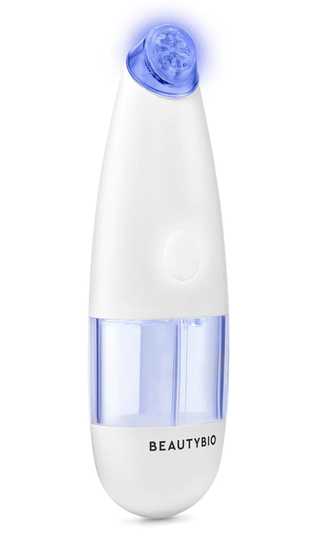
With most pore vacuums, you only get extractions. With a GLOfacial treatment, your skin is also simultaneously infused with the GLOfacial concentrate, packed with clarifying salicylic and plumping hyaluronic acid for a satisfying cleanse and pro-level results with every use. The treatment tips are designed to provide gentle extractions and exfoliation, so it’s perfect for all skin types. I recommend adding this game-changing tool to your skincare routine once to twice weekly to maintain a healthy, hydrated glow.
Number of Attachments: 3
Number of Settings: 1
What We Love: Gentle; infuses skin with hydrating and acne-fighting ingredients; contains LED light
What We Don't: Complicated instructions; expensive
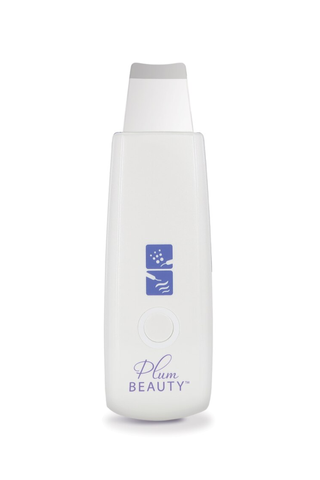
Joshua Zeichner, MD, a board-certified dermatologist, counts this as his personal favorite face spatula. In fact, he prefers it to the more traditional pore vacuum. It offers gentle vibration and only requires gentle pressure to be effective, which makes it ideal for those with more sensitive skin types. Its approach is two-prong: First, it exfoliates your skin. Second, it infuses skincare products.
Number of Attachments: 1 (does not need to be replaced)
Number of Settings: 2
What We Love: Dermatologist-approved; features several modes; safe for sensitive skin
What We Don't: Better suited for removing oil than clogged debris
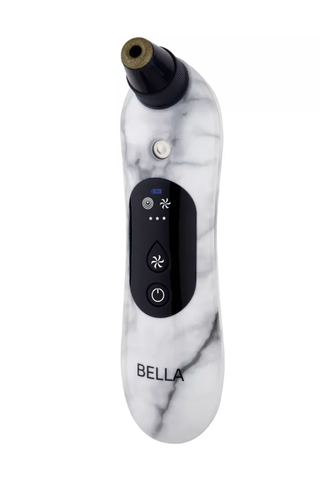
Don't let the affordable price tag fool you: This pore vacuum has a bunch of fancy features. First and foremost, it has a microdermabrasion tip to slough away dead skin cells and banish dry patches to reveal fresher, glowier, and dewier skin. There are also three speeds to choose from, as well as an alternate tip that sucks out the gunk. Plus, it has an innovative wet feature (it's called the "nanomist infuser") that allows for a more refreshing and significantly less intense treatment.
Number of Attachments: 4
Number of Settings: 3
What We Love: Affordable; safe for sensitive skin
What We Don't: Other options on the market are more powerful
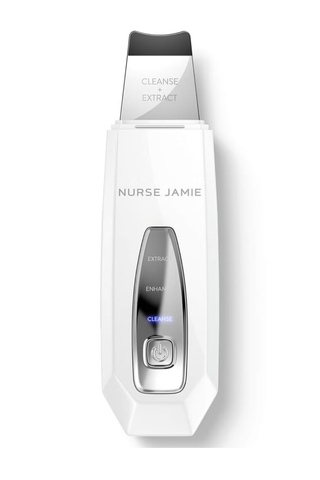
This sleek tool from Nurse Jamie is designed to clean your skin while it unclogs your pores. It comes with three extremely easy-to-use features: Cleanse, enhance, and extract. The first is pretty self explanatory—just pair the setting with your favorite cleanser. The second setting should be used in tandem with your go-to skincare products; it'll help push the actives deeper into the skin. The third, while optional, is really where you'll get to work on your blackheads. And because there's no suction, you're less likely to irritate the skin—just start off with soft pressure.
Number of Attachments: 1 (does not need to be replaced)
Number of Settings: 3
What We Love: User friendly; multipurpose
What We Don't: Because it's an ultrasonic device, it doesn't have the vacuum capability you might be looking for
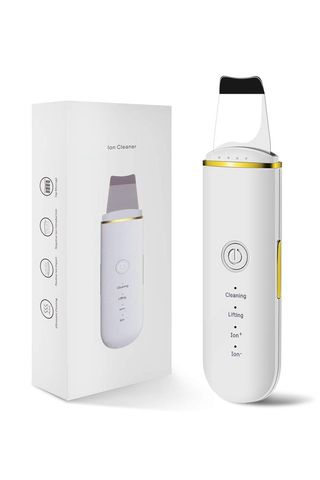
Another spatula, this hefty tool has high-frequency vibration and several modes to serve specific ailments. Along with its cleanse and lift mode which gets rid of oil, dead cells, and debris, it also has Ion+ and Ion- settings. Ion+ lifts unwanted oil and build-up from environmental elements. Ion- allows a deeper product penetration, so save your favorite serum for this. It also tightens sagging skin and promotes blood circulation for an extra-plumped face.
Number of Attachments: 3
Number of Settings: 4
What We Love: Plumping; good for mature skin; affordable
What We Don't: Not as powerful as other options
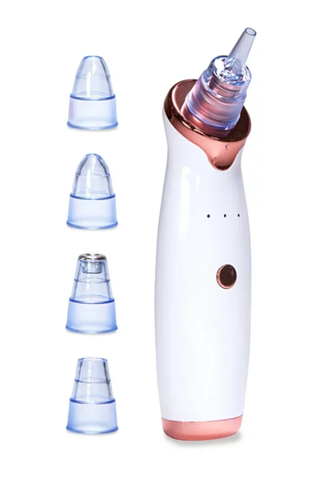
If you’re looking for a low-cost way to deep clean your skin right from home, check out this under-$40 device. It comes with five heads: some focus on unclogging pores, another is for gentle exfoliation, and the final specializes in firming the skin. Just make sure you keep the tool moving—not hovering—to avoid bruising or irritation.
Number of Attachments: 5
Number of Settings: 3
What We Love: Affordable; customizable; multi-beneficial
What We Don't: The T-zone setting is too strong for most
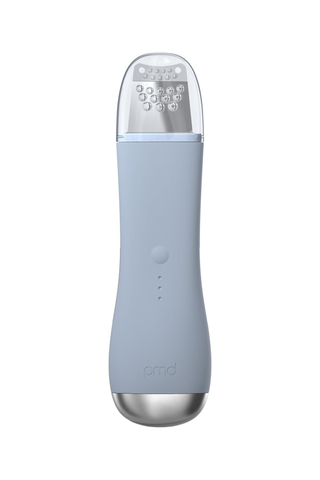
Can you tell that PMD knows exactly what they're doing? Another spatula, PMD Beauty's take was created to help reduce the appearance of enlarged pores and blackheads—the dream, obviously. After dampening your skin, glide the device in an upward and outward motion to get rid of dirt and oil. After unclogging, apply your skincare products and turn on the infuse setting to help them sink in. Another fantastic feature is PreciseXtractor, which helps you tackle the exact blackhead or whitehead that's bothering you.
Number of Attachments: 1 (does not need to be replaced)
Number of Settings: 2
What We Love: Multiple settings; great at removing gunk
What We Don't: More expensive than other options
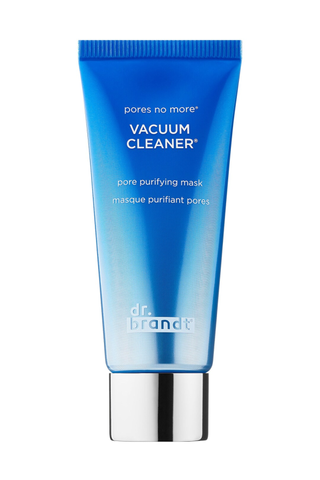
Did you think you'd see a manual face mask on this list? Probably not, but it fits in beautifully. Crafted to work like a pore vacuum without the actual vacuuming capability, this cooling, pore-purifying AHA/BHA salicylic and glycolic acid complex mask breaks apart dirt and oil, helping to unclog pores, shrink their appearance, and cleanse skin overall. Reviewers love how it works on their blackheads and that it doesn't dry out their face.
Number of Attachments: N/A
Number of Settings: N/A
What We Love: You definitely won't bruise; exfoliates; loosens blackheads and whiteheads
What We Don't: Some reviewers don't love the smell
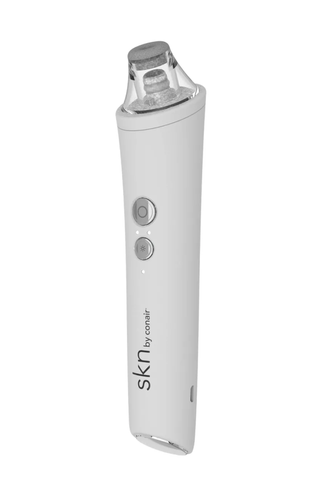
With four treatment tips, two speeds, and gentle suction options, SKN by Conair's Rechargeable Microdermabrasion and Pore Tool has just about everything you're looking for in a pore vacuum. But wait until you find out about the warm plate. Because steaming your face is recommended before you begin extractions, the brand added a warm plate to help open clogged pores for deeper extraction and to boost product absorption.
Number of Attachments: 4
Number of Settings: 2
What We Love: Multiple settings; warming feature; strong suction power
What We Don't: Can leave red marks or welts behind if not properly utilized
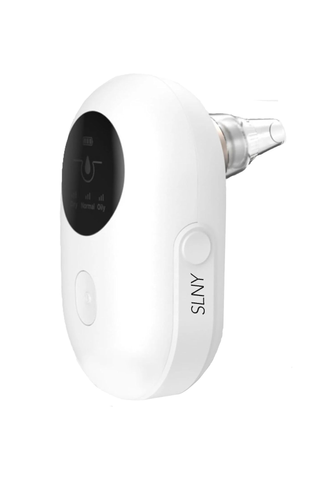
This little pore-sucking pro features four different sized suction heads and one gentle exfoliation head. Designed to be used one time per week on clean, dry skin, its instructions are simple: clean your face, hit "go," and then glow. (However, should still be said to use caution when using! No matter how great the product, pore vacuums all carry the same risks).
Number of Attachments: 6
Number of Settings: 1
What We Love: Multiple suction heads; small size makes it easy to hold
What We Don't: None found
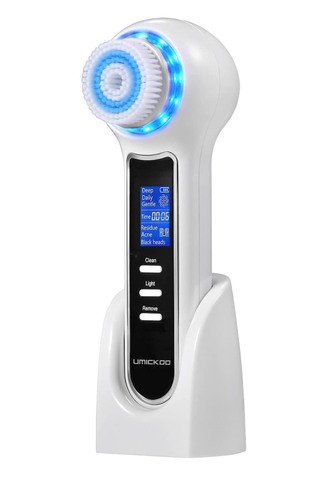
With a blue LED light and a scrubbing brush (with five brush heads!), Umickoo's Blackhead Remover Vacuum has everything you need to tackle skin gunk. The vacuum component also features four suction heads—small, medium, large, and oval—and three suction levels so you can customize your suck to your hearts content.
Number of Attachments: 9
Number of Settings: 6
What We Love: Plenty of features and customizable options; LED light included; leaves skin soft; waterproof
What We Don't: Some customers have trouble charging their device; suction can be too powerful for some
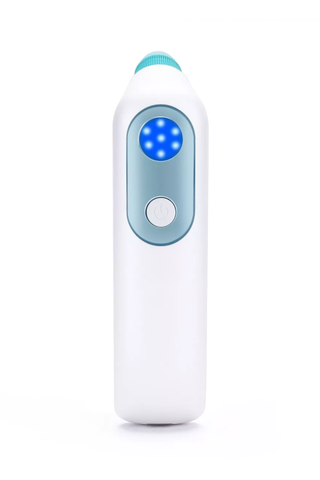
While its purpose is similar to all the other options on this list, Prospera's pore vacuum is special for its massage option. Still, if you're only here for gunk removal, I can assure you that the suction here is strong. What's more? The textured handles provide anti-slip grip so you can comfortably get the job done.
Number of Attachments: 4
Number of Settings: 4
What We Love: Long-lasting battery; massage setting; good value
What We Don't: Suction can be too strong for some
What to Look For in a Pore Vacuum
- Customizable Suction
Let me say this loud and clear: Customizability is key. Different areas of the skin can handle different levels of suction—it's not a one-size-fits-all situation. As such, you'll likely want to select a pore vacuum that has a variety of settings. "The greater the level of suction, the more likely you are to damage blood vessels leading to bruising," says Dr. Zeichner. "Areas of thin skin, like the neck and skin around the eyes are especially susceptible to trauma. Areas of thicker skin, like the nose, can tolerate higher suction levels." When in doubt, start with the low setting (if that's an option) and don't linger too long in any area.
- Tip Options
A decent chunk of options on the market come complete with a singular base and a multitude of tip attachments. There's a good reason for all of the add-ons. "Different shape tips allow you to use the device in different parts of the face," says Dr. Zeichner. A more narrow tip would be ideal for the sides of the nostrils, while a larger tip could be used along the forehead. Some pore vacuums will also come with microdermabrasion tips, which offer gentle exfoliation and suction benefits, per Dr. Zeichner.
- Spatula Design
While most pore vacuums are going to operate with suction, it's worth calling out spatula devices as well. Sitting just adjacent to pore vacuums, these are probably preferable for sensitive skin types. According to Dr. Zeichner, they "offer gentle vibrations and can help remove blockages within the pores with gentle pressure that you control."
How Does a Pore Vacuum Work?
In the same way that a real vacuum will suck up dust from the floor, a pore vacuum will suck up pore-clogging materials. “Pore vacuums usually have three levels of suction that work like a vacuum for your pores,” explains Jamie O’Banion, the founder of BeautyBio. “The suction power increases with each level, so you can customize your treatment based on what’s best for your skin.” In the end, your pores should be cleaner and look smaller.
A photo posted by on
How Do I Use a Pore Vacuum?
Whatever you, do NOT simply turn on the power button and go to suction town. You’ll want to read the instructions mega-carefully, as they’ll differ from tool to tool. The key to a successful treatment? “Always keep the tool moving and avoid hovering over a singular spot,” advises O’Banion. “If a tool is left on a single area, it can cause redness as circulation is pulled to that area.”
How Long Will It Take to See Results?
The suction should take care of whiteheads in one treatment, but you might need to be patient on the blackhead front. It can take time to dislodge all the gunk. That said, Dr. Camp feels that “if your acne is not responding to at-home treatments and you find yourself turning to your pore vacuum often, it’s time to schedule an appointment with a board-certified dermatologist who will help you establish a better understanding of the cause of your acne and develop a treatment plan.”
If you're looking for fast results, a professional appointment also might not be a bad idea. Dr. Aliksanian is a fan of professional treatments like the Diamond Glow facial or HydraFacial, which are in-office pore vacuum treatments conducted by a licensed aesthetician.
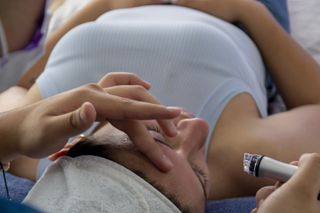
HydraFacial is an in-salon option for people who want the benefits of pore vacuuming but don't feel comfortable performing the duties at home.
Which Skin Types Can Use Pore Vacuums?
Pore vacuums are not for everyone, nor are they suited for every type of pimple or clogged pore. “Patients with sensitive skin may want to use a pore vacuum with caution,” warns Dr. Camp. Use can lead to irritation, inflammation, or broken blood vessels, especially in people who have rosacea. "You also have to be careful if you have any sort of bleeding disorder or bruise easily," adds Dr. Zeichner. "Do not use the devices if you have any open or raw skin or active skin issues like eczema."
Pore vacuums are ideal for people who have oily or acne-prone skin, specifically those with blackheads or whiteheads that are already visible and have come to a head on the skin. “These devices are best used on comedones once they have developed,” Dr. Camp adds. “Those with more inflammatory acne, such as pustules and cystic lesions, will need a different form of treatment.”
What Are the Risks of Using a Pore Vacuum?
The most common issues when using a pore vacuum are skin irritation and redness, which is why sensitive skin types should steer clear. "Pore vacuums are a home version of the professional pore suction devices used by estheticians. They are not regulated as skin devices by the FDA (unlike professional versions) so they do pose some risks," shares Dr. Aliksanian. "The main risks are too much suction on the skin which can break capillaries and remain permanently apparent on the skin as unsightly red marks. It can also cause breaks or microtears in the skin, putting people at risk of breakouts and scarring."
Dr. Camp adds that pore vacuums can exacerbate existing skin conditions like acne or rosacea. “It can also cause discoloration in the form of hyperpigmentation, which can take a long time to resolve.”
Why Trust Marie Claire?
Danielle Cohen is a freelance beauty writer, editor and consultant with years of experience writing about skincare and the beauty industry. She and the Marie Claire team tapped four industry experts—dermatologists, skin experts, and founders alike—to assemble the best, safest at-home pore vacuums. She put their picks to the test, as did the rest of the Marie Claire team on a range of skin types, and then reviewed each based on ease of use, effectiveness, customizable features, and side effects.
When it comes to the products Marie Claire recommends, we take your faith in us seriously. Every product that we feature comes recommended by a MC writer or editor, or by an expert we've spoken to. Learn more about how we review products.
Meet the Experts

Brendan Camp, M.D., is double board-certified in dermatology and dermatopathology and sees patients at MDCS Dermatology: Medical Dermatology & Cosmetic Surgery, which has locations in Upper East Side, Hampton Bays, Commack, Smithtown, Plainview, and Midtown East of Manhattan, New York. Patients have been coming to him for his expertise managing medical conditions like acne, rosacea, eczema, warts, psoriasis, moles, and skin cancer, as well as cosmetic concerns and treatments with Botox, fillers, lasers, and other skin rejuvenation devices. Dr. Camp graduated with honors from Cornell University, earning a degree in biochemistry. He also completed a fellowship in dermatopathology at Memorial Sloan-Kettering Cancer Center in 2012. He has previously served as an assistant professor of dermatology at George Washington University School of Medicine and Health Sciences and worked in private practice just outside Washington DC in Northern Virginia.

During her years in practice as a wound care specialist, Dr. Lori Aliksanian (or Dr. Lori, as most of her clients know her) became fascinated by skin integrity and the body’s own regenerative potential. She began seeing patients with cosmetic aging concerns who wanted her help in restoring their appearance. She has since used her knowledge and expertise in skin healing to further maximize her aesthetic treatments.
Dr. Aliksanian holds a bachelor’s degree from the University of California, Irvine and earned her MD at Ross University School of Medicine in Dominica, W.I. She completed an internship in general surgery at the University of Maryland in Baltimore, then returned to Los Angeles for a residency in general surgery at Harbor-UCLA and a fellowship in wound reconstructive surgery at Rancho Los Amigos National Rehabilitation Center.

As the Director of Cosmetic and Clinical Research at Mount Sinai Hospital's Department of Dermatology, Dr. Zeichner has a broad interest in medical and cosmetic dermatology as well as clinical research. His specialty is the treatment of acne, as well as the cosmetic rejuvenation of the aging face. Dr. Zeichner treats general skin conditions, including eczema, rosecea, psoriasis, and skin cancer. In addition, he is well-versed in the use of Botox and dermal fillers, as well as lasers and chemical peels.

Jamie O'Banion is the CEO and founder of BeautyBio, a clean-clinical skincare brand focused on science-backed solutions. She was recently featured in Forbes as one of four female entrepreneurs to watch in their issue highlighting the most successful female entrepreneurs in America.
Stay In The Know
Get exclusive access to fashion and beauty trends, hot-off-the-press celebrity news, and more.

Danielle Cohen is a freelance beauty journalist with more than five years of industry experience and a lifetime of beauty obsession to boot. Her writing has appeared in Allure, Elle, Glamour, InStyle, Cosmopolitan, Air Mail Look, Well + Good, CR Fashion Book, Refinery29, and Byrdie, among others. When she’s not doling out SPF recommendations, you can find her sifting through celebrity blind items, working on the daily crossword, or walking her French bulldog, Rollo. Keep up with her on Instagram @daniellemcohen.
- Samantha HolenderSenior Beauty Editor
- Sophia VilenskyFreelance Writer
-
 Taylor Swift Was "Blown Away" by the Surprise Eras Tour Wrap Party Travis Kelce Threw for Her
Taylor Swift Was "Blown Away" by the Surprise Eras Tour Wrap Party Travis Kelce Threw for Her“That was the last thing she was expecting and she couldn’t believe Travis went out of his way to throw a surprise party for her," a source said.
By Kayleigh Roberts Published
-
 Demi Moore, Kate Winslet, and Zoe Saldaña Recount the Power of Women Saying "No"
Demi Moore, Kate Winslet, and Zoe Saldaña Recount the Power of Women Saying "No""When you say no, you're also telling the universe what you want to be brought to you."
By Alicia Lutes Published
-
 Taylor Swift Styles an Opulent Crimson Fur Coat Like a Chiefs Game Mini Dress
Taylor Swift Styles an Opulent Crimson Fur Coat Like a Chiefs Game Mini Dress"She looks so expensive." - Everyone who sees this look.
By Kayleigh Roberts Published
-
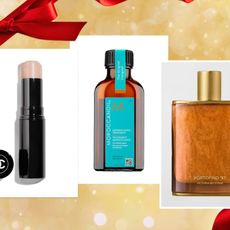 19 Beauty Stocking Stuffers Guaranteed to Please Your Pickiest Family Members
19 Beauty Stocking Stuffers Guaranteed to Please Your Pickiest Family MembersBeauty editor-tested and approved.
By Ariel Baker Published
-
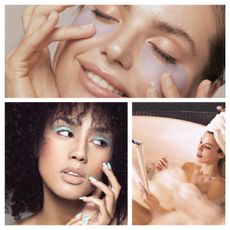 23 Luxury Beauty and Wellness Gifts for Your Pickiest Self-Care Obsessed Friends
23 Luxury Beauty and Wellness Gifts for Your Pickiest Self-Care Obsessed FriendsGuaranteed to please even your pickiest friends and family.
By Hannah Baxter Published
-
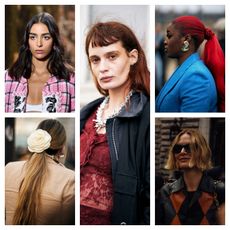 10 Winter Hair Color Trends Fashionable Women Love This Season
10 Winter Hair Color Trends Fashionable Women Love This SeasonThe season's top hair color trends are painfully chic.
By Jamie Wilson Published
-
 10 Winter Haircut Trends Stylish Women Are Wearing in 2024
10 Winter Haircut Trends Stylish Women Are Wearing in 2024It's time to get a little scissor happy.
By Jamie Wilson Published
-
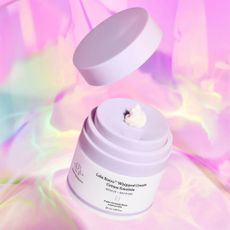 Drunk Elephant Recalls Three Best-Selling Skincare Products Following an Ingredient Mix-Up
Drunk Elephant Recalls Three Best-Selling Skincare Products Following an Ingredient Mix-UpHere's how to know if yours were compromised.
By Hanna Lustig Published
-
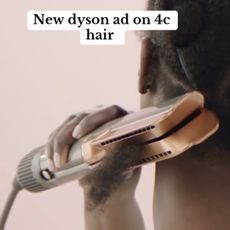 Why Dyson's New Airstrait Ad Ignited a TikTok Controversy
Why Dyson's New Airstrait Ad Ignited a TikTok Controversy"They said y'all can buy the product but it is not meant for you."
By Hanna Lustig Published
-
 As A First-Time Marathon Runner, These Wellness Essentials Helped Enhance My Training and Recovery
As A First-Time Marathon Runner, These Wellness Essentials Helped Enhance My Training and RecoveryFrom a hardworking deodorant to a soothing sauna blanket.
By Halie LeSavage Published
-
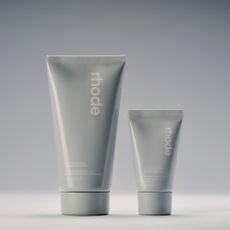 Hailey Bieber’s New Rhode Barrier Butter Is So Decadent, You’ll Want to Smear It Everywhere
Hailey Bieber’s New Rhode Barrier Butter Is So Decadent, You’ll Want to Smear It EverywhereIntroducing the brand's yummiest product yet: Barrier Butter.
By Hanna Lustig Last updated